Guinea pigs are fascinating creatures that require a nuanced understanding of their behavior to provide them with the best care possible. As a responsible guinea pig owner, it’s essential to decode their signals and decipher their behavior accurately. From understanding guinea pig behavior signals to decoding their vocalizations and body language, this comprehensive guide will equip you with the knowledge you need to ensure the well-being of your beloved pet.
Guinea pigs, originally from the Andes region of South America, have specific needs that differ from rabbits and other rodents. They use scent marking as a form of communication and are most active during dusk and dawn. Observing their jumping and turning in the air when excited is a delight to witness.
Diet plays a crucial role in guinea pig health, and their specific dietary requirements, including a need for vitamin C, must be met. Quality feeding hay should form the primary part of their diet. Understanding the average lifespan of a guinea pig, which ranges from 4 to 8 years (with outliers living up to 14 years), is important for long-term care and planning.
Key Takeaways:
- Understanding guinea pig behavior signals is crucial for providing them with appropriate care.
- Guinea pigs scent mark to communicate with each other.
- They are most active during dusk and dawn and can exhibit exciting jumping and turning behaviors.
- Vitamin C is an essential dietary requirement for guinea pigs, and their diet should mainly consist of quality feeding hay.
- Guinea pigs have an average lifespan of 4 to 8 years, with some outliers living up to 14 years.
Guinea Pig Communication: Understanding Noises and Vocalizations
Guinea pigs are highly communicative creatures and rely on various noises to express their thoughts and emotions. They have a natural vocalization ability that begins just two weeks after birth and persists throughout their lives. By understanding and interpreting their vocalizations, you can develop a deeper connection with your guinea pig and ensure their well-being.
Wheeking: Excitement and Anticipation
One of the most recognizable guinea pig noises is wheeking. This high-pitched sound is often associated with mealtime and signifies excitement and anticipation. Your guinea pig may let out persistent wheeks when they hear the rustling of food packaging or the sound of their favorite treats being prepared.
Chutting: Contentment and Relaxation
If you notice a soft, contented chirruping sound coming from your guinea pig, it’s likely that they are chutting. This vocalization indicates that your guinea pig is in a relaxed and happy state. It’s a sign that they feel comfortable, secure, and trust their environment and their relationship with you.
Shrieking or Squealing: Fear or Pain
A loud, high-pitched shriek or squeal is a clear indication that your guinea pig is experiencing fear or pain. It’s crucial to take this vocalization seriously and investigate the cause. Assess their surroundings for potential threats or hazards and consult a veterinarian if needed to address any health concerns.
Teeth Chattering: Annoyance or Stress
When your guinea pig emits teeth chattering sounds, it is often a sign of annoyance or stress. This noise typically occurs when they feel threatened or uncomfortable in their environment. It’s important to identify the source of their distress and provide them with a calm and secure atmosphere.
Rumbling: Establishing Dominance
Guinea pigs use rumbling as a way to establish dominance and communicate with other guinea pigs. This low, continuous rumble is similar to a growl and can be heard during territorial disputes or while establishing social hierarchy. Understanding this behavior can help you manage their interactions and ensure a harmonious guinea pig community.
Purring: Relaxed and Contentment
Similar to cats, guinea pigs purr when they are relaxed and content. Purring is a repetitive, low grumbling sound that indicates their comfort and happiness. You may hear this gentle purring sound when you are petting or grooming your guinea pig, and it is a sign of their trust and affection.
By paying close attention to the various vocalizations, you can better understand your guinea pig’s needs, emotions, and overall well-being. Remember that each guinea pig is unique, and it may take time to fully comprehend their communication style. Patience and observation are key to forming a strong bond with your furry friend.
Body Language and Behavior: Decoding Your Guinea Pig’s Actions
In addition to vocalizations, guinea pigs also use body language to communicate. Understanding guinea pig body language is essential for guinea pig owners to interpret their pets’ behaviors accurately.
Freezing: Extreme Fear or Uncertainty
One common guinea pig behavior is freezing, where a guinea pig becomes completely still. This behavior typically indicates extreme fear or uncertainty. When a guinea pig freezes, it is important to assess the situation and provide a calm and safe environment to alleviate their distress.
Popcorning: Joyful Behavior
Popcorning is a delightful behavior often exhibited by guinea pigs. It involves the guinea pig jumping in the air with excitement. This joyful display of guinea pig behavior signifies their happiness and well-being. Witnessing popcorning is a heartwarming experience for guinea pig owners.
Zooming: Happiness and Good Health
Zooming refers to when a guinea pig races around its enclosure with enthusiasm and energy. This high-speed running behavior indicates that the guinea pig is happy and in good health. Providing ample space for guinea pigs to zoom and explore their surroundings is crucial to their physical and mental well-being.
Rearing the Head: Display of Dominance
Rearing the head is a behavior commonly seen when introducing new guinea pigs or during dominance interactions. By elevating their heads, guinea pigs assert their dominance and establish their position within the social hierarchy. Guinea pig owners should closely observe and manage these interactions to ensure a harmonious living environment.
Barbering: Chewing Hair
Guinea pigs may engage in barbering, where they chew the hair of other guinea pigs, or self-barbering, where they chew their own hair. While the exact reasons for this behavior are not fully understood, it is believed to be a coping mechanism or a sign of stress. Owners should monitor barbering behavior and address any underlying causes to promote the well-being of their guinea pigs.
Other Behaviors: Expressing Dislike or Warding Off Threats
Guinea pigs may exhibit various other behaviors to express dislike or ward off threats. These behaviors can include spraying urine, licking other guinea pigs’ eyes, or even hissing. Understanding and interpreting these actions are crucial for guinea pig owners to ensure their pets’ comfort and safety.
By paying attention to guinea pig body language and behavior, owners can gain valuable insights into their pets’ emotions and needs. Building a strong bond and providing appropriate care becomes easier when we understand and respond to their actions.
| Body Language | Meaning |
|---|---|
| Freezing | Extreme fear or uncertainty |
| Popcorning | Joyful behavior |
| Zooming | Happiness and good health |
| Rearing the Head | Display of dominance |
| Barbering | Chewing hair |
| Other Behaviors | Expressing dislike or warding off threats |
The Importance of Creating a Natural Environment for Your Guinea Pig
Creating a natural environment for your guinea pig is essential for their mental and physical well-being. Guinea pigs are naturally timid animals and providing hiding places such as shelters or piles of hay helps them feel safe and secure. They also need their own space while still enjoying social interaction. A spacious enclosure with room to explore and exercise is important for their well-being. Guinea pigs enjoy grazing and foraging for food, so including dried forage and safe wild plants in their diet can enhance their natural eating habits and provide mental stimulation.
| Benefits of a Natural Environment | Ways to Create a Guinea Pig Habitat |
|---|---|
|
|
How to Hold and Handle Your Guinea Pig: Understanding Their Behavior During Interaction
When it comes to holding and handling your guinea pig, it’s important to have a good understanding of their behavior and body language. Guinea pigs are sensitive creatures, and knowing how they communicate can help ensure a positive and stress-free interaction.
One important behavior to watch out for is head flicking. If a guinea pig flicks its head back while being stroked, it’s usually a sign to stop or that the guinea pig is becoming upset. Respect their boundaries and give them space when they display this behavior.
On the other hand, chin stroking is a positive behavior that indicates a guinea pig is enjoying the attention and feels relaxed. It’s often accompanied by purring sounds, which further highlights their contentment.
If your guinea pig licks you while being held, it’s typically a sign that they want to return to their enclosure to urinate. This is their way of communicating their needs, so be aware of their cues and allow them to take care of their business.
By observing and understanding these behaviors, you can create a more enjoyable and comfortable experience for your guinea pig and yourself.
Guinea pigs have different personalities and preferences, so it’s essential to handle each one based on their individual comfort level. Pay attention to their reactions and adjust your approach accordingly.
Tips for Holding and Handling Guinea Pigs:
- Start by gaining your guinea pig’s trust through gentle and regular interactions
- Support their body with both hands, ensuring they feel secure
- Avoid squeezing or gripping them too tightly
- Limit handling sessions to short periods, especially when they are still getting used to being held
- Create a calm and quiet environment to minimize stress
- Allow them to explore and interact with you at their own pace
- Always supervise children when handling guinea pigs to ensure gentle and safe interactions
Common Mistakes to Avoid:
- Handling a guinea pig forcefully or abruptly
- Approaching a guinea pig from above or startling them
- Restraining them against their will or making sudden movements
- Ignoring their body language and warning signs of discomfort
- Exposing them to loud noises or chaotic environments
Remember, guinea pigs are delicate animals that require gentle care and handling. Taking the time to understand their behavior and respecting their boundaries will foster a trusting and enjoyable bond between you and your furry friend.
Next, we’ll explore the behavior differences between male and female guinea pigs, providing further insights into their unique traits and needs.
Behavior Differences Between Male and Female Guinea Pigs
When it comes to guinea pig behavior, it’s important to note the differences between males and females. These differences can have a significant impact on their interactions and overall well-being. Understanding and recognizing these behaviors is vital for providing appropriate care and ensuring a harmonious environment for your guinea pigs.
Male Guinea Pigs:
Male guinea pigs, known as boars, may display more aggression and dominance behaviors compared to their female counterparts. It’s not uncommon to observe behaviors such as rumblestrutting and swaying their bottoms, which are displays of dominance. As responsible guinea pig owners, it’s crucial to monitor their interactions closely and consider separating them if conflicts arise.
Males may exhibit aggression towards other males, especially if they are not neutered. Neutering can help reduce aggressive behaviors and promote a more peaceful environment for your guinea pigs.
Female Guinea Pigs:
Female guinea pigs, known as sows, have unique behavioral characteristics influenced by their reproductive cycle. Sows come into season every 16 days, which can affect their behavior. During this time, you may notice increased restlessness, mounting other guinea pigs, or even aggression. Understanding these hormonal fluctuations can help you better care for your female guinea pigs and provide them with appropriate support.
It’s worth noting that not all male and female guinea pigs will exhibit these behaviors to the same extent. Each guinea pig has its own personality, and individual differences can influence their behavior. Proper socialization, consistent monitoring, and providing a safe and enriched environment can help mitigate any behavioral challenges.
To illustrate the behavioral differences between male and female guinea pigs, the following table highlights their distinct characteristics:
| Behavior | Male Guinea Pigs (Boar) | Female Guinea Pigs (Sow) |
|---|---|---|
| Aggression | May demonstrate dominance behaviors (e.g., rumblestrutting, bottom swaying) | Can be aggressive, especially during mating season |
| Reproductive Cycle | Does not experience reproductive cycles | Comes into season every 16 days, exhibiting mood fluctuations |
| Interactions with Other Guinea Pigs | Tends to be more territorial and assertive | Can display mounting or aggression, especially during mating season |
| Neutering | May help reduce aggression | Not applicable |
Understanding these behavior differences between male and female guinea pigs can guide you in creating a harmonious living environment for your furry companions. Proactively addressing behavioral challenges and providing appropriate care will promote the overall well-being of your guinea pigs.
Recognizing Signs of Depression in Guinea Pigs
Guinea pigs can experience depression, and it’s important to recognize the signs. These signs may include a lack of interest in food, reduced activity and movement, excessive sleeping, changes in vocalizations, and weight loss. If you notice these signs, it’s important to consult a veterinarian to ensure your guinea pig receives appropriate care and treatment for their mental health.
Conclusion
Understanding guinea pig behavior signals is crucial for providing appropriate care and ensuring the well-being of your pet. By deciphering their vocalizations, body language, and actions, you can better understand their needs, emotions, and overall happiness.
Creating a natural environment is essential for guinea pigs to thrive. They need a spacious enclosure with hiding places and opportunities for foraging, grazing, and mental stimulation. Handling them properly, respecting their boundaries, and recognizing any behavior changes is vital in building a strong bond with your guinea pig.
As a responsible guinea pig owner, it’s important to prioritize their physical and mental well-being. By following this comprehensive guide, you’ll be equipped with the knowledge and understanding to provide your furry friend with a happy and fulfilling life.
FAQ
What are some common vocalizations guinea pigs make and what do they mean?
Guinea pigs make a variety of vocalizations to communicate. Wheeking signifies excitement or anticipation, chutting indicates a contented and relaxed guinea pig, shrieking or squealing signifies fear or pain, teeth chattering can indicate annoyance or stress, rumbling is a way for guinea pigs to establish dominance, and purring signifies relaxation and contentment.
How do guinea pigs use body language to communicate?
Guinea pigs use various body language signals to communicate. Freezing indicates extreme fear or uncertainty, popcorning shows joy and excitement, zooming indicates happiness and good health, rearing the head displays dominance, and behaviors such as barbering, spraying urine, licking eyes, and hissing express dislike or ward off threats.
What can I do to create a natural environment for my guinea pig?
Creating a natural environment for your guinea pig is crucial for their well-being. Providing hiding places, such as shelters or piles of hay, helps them feel safe. A spacious enclosure with room for exploration and exercise is important. Including dried forage and safe wild plants in their diet can enhance their natural eating habits and provide mental stimulation.
How should I hold and handle my guinea pig?
When holding and handling your guinea pig, it’s important to be aware of their behavior and body language. If a guinea pig flicks its head back, it may be a sign to stop or that it’s becoming upset. Chin stroking typically indicates that a guinea pig enjoys the attention and feels relaxed. If a guinea pig licks you while being held, it may be a sign that it wants to return to the enclosure to urinate.
Are there behavioral differences between male and female guinea pigs?
Yes, male and female guinea pigs may exhibit different behaviors, especially if they are not neutered. Male guinea pigs may show more aggression and dominance behaviors, while female guinea pigs come into season every 16 days, which can affect their behavior. Monitoring their interactions and considering separation or neutering is important.
What are some signs of depression in guinea pigs?
Signs of depression in guinea pigs may include a lack of interest in food, reduced activity and movement, excessive sleeping, changes in vocalizations, and weight loss. If you notice these signs, it’s important to consult a veterinarian for appropriate care and treatment.

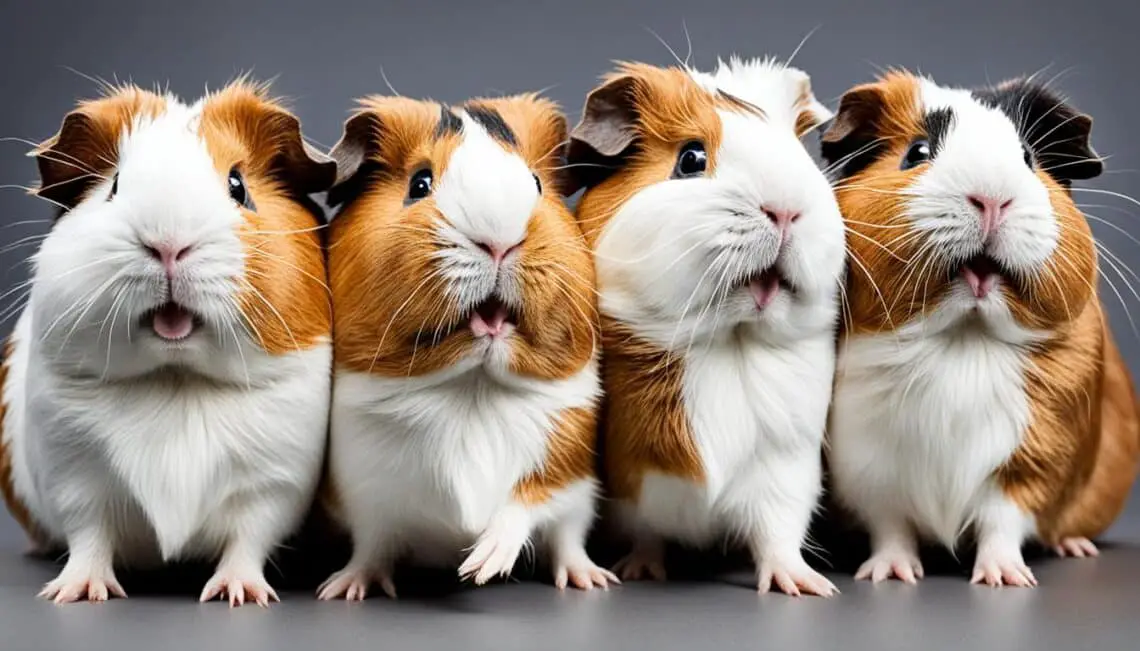
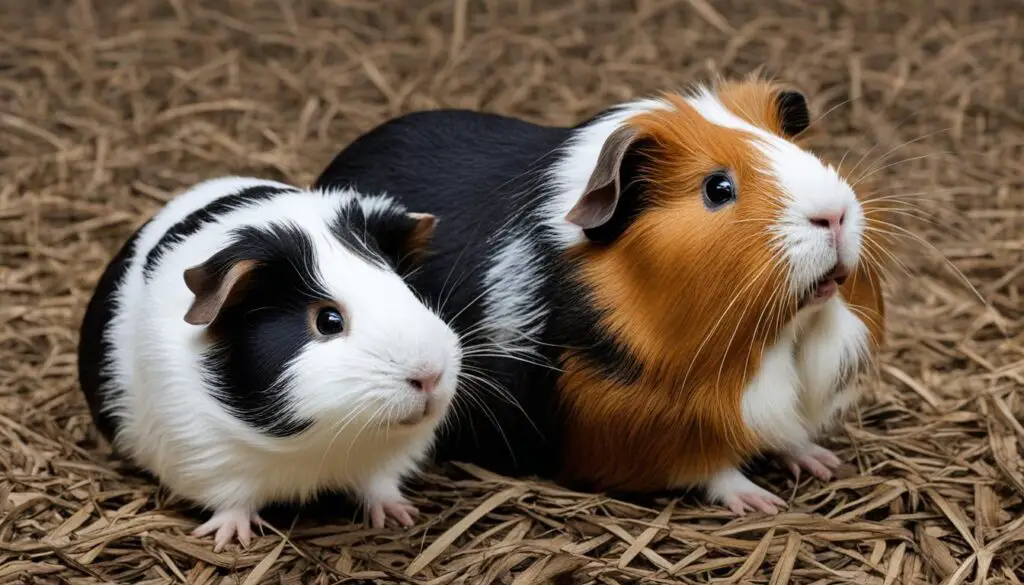

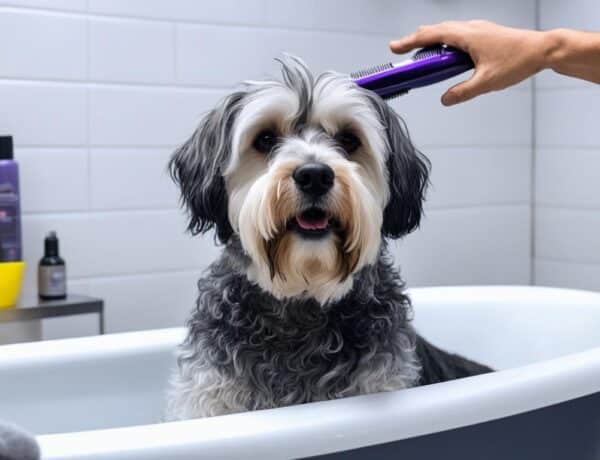
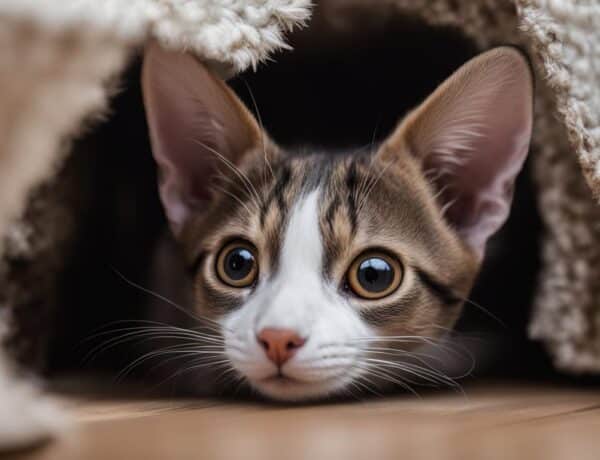
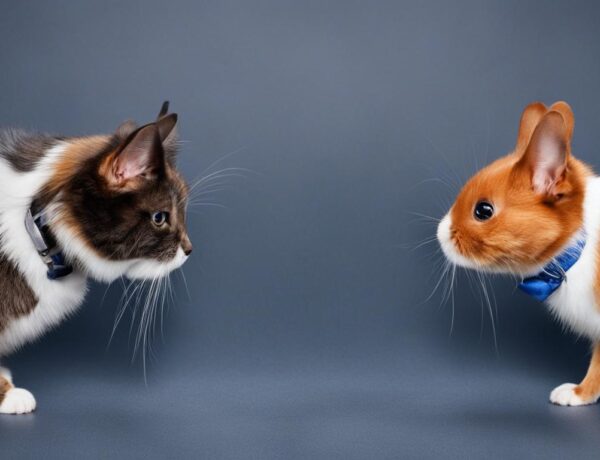
No Comments